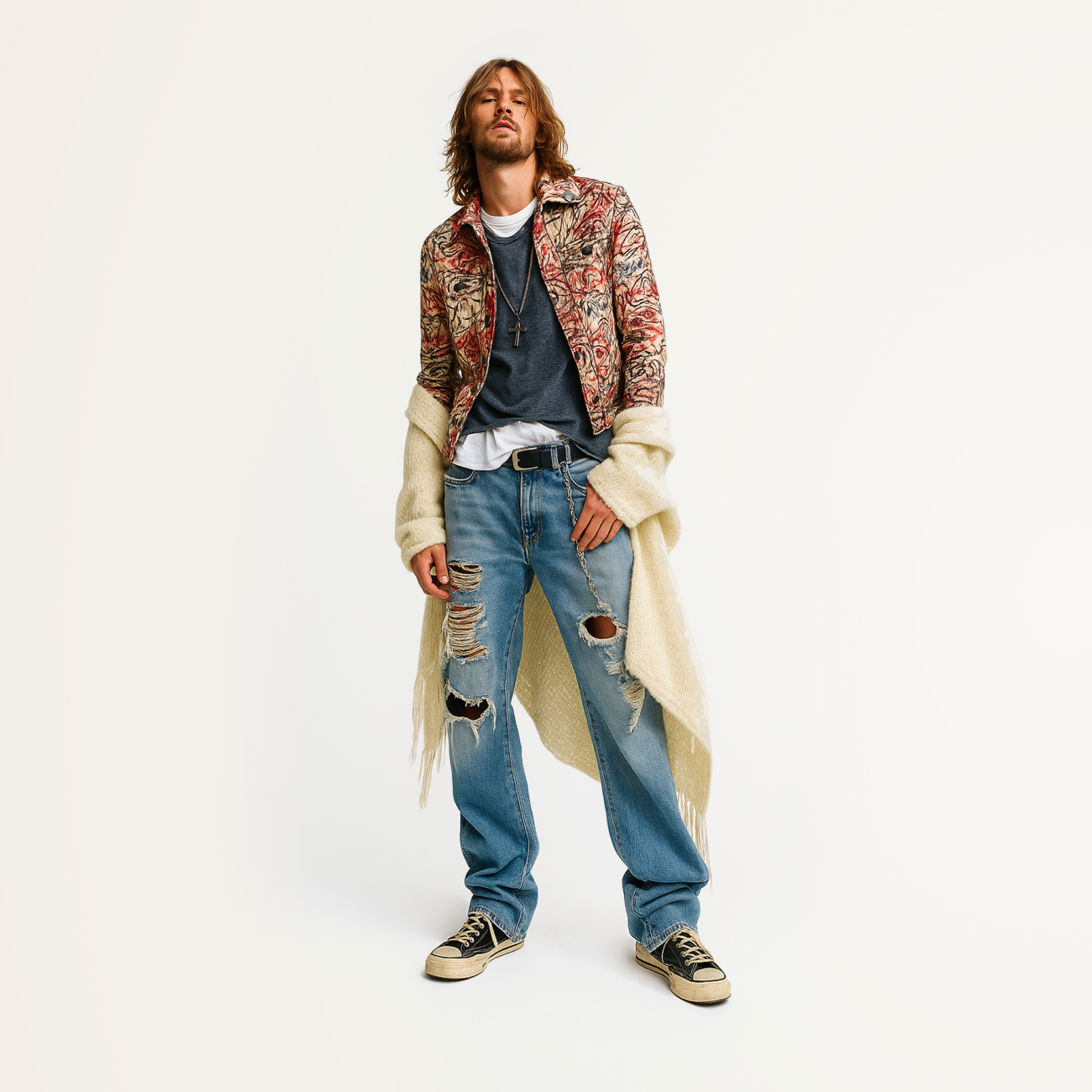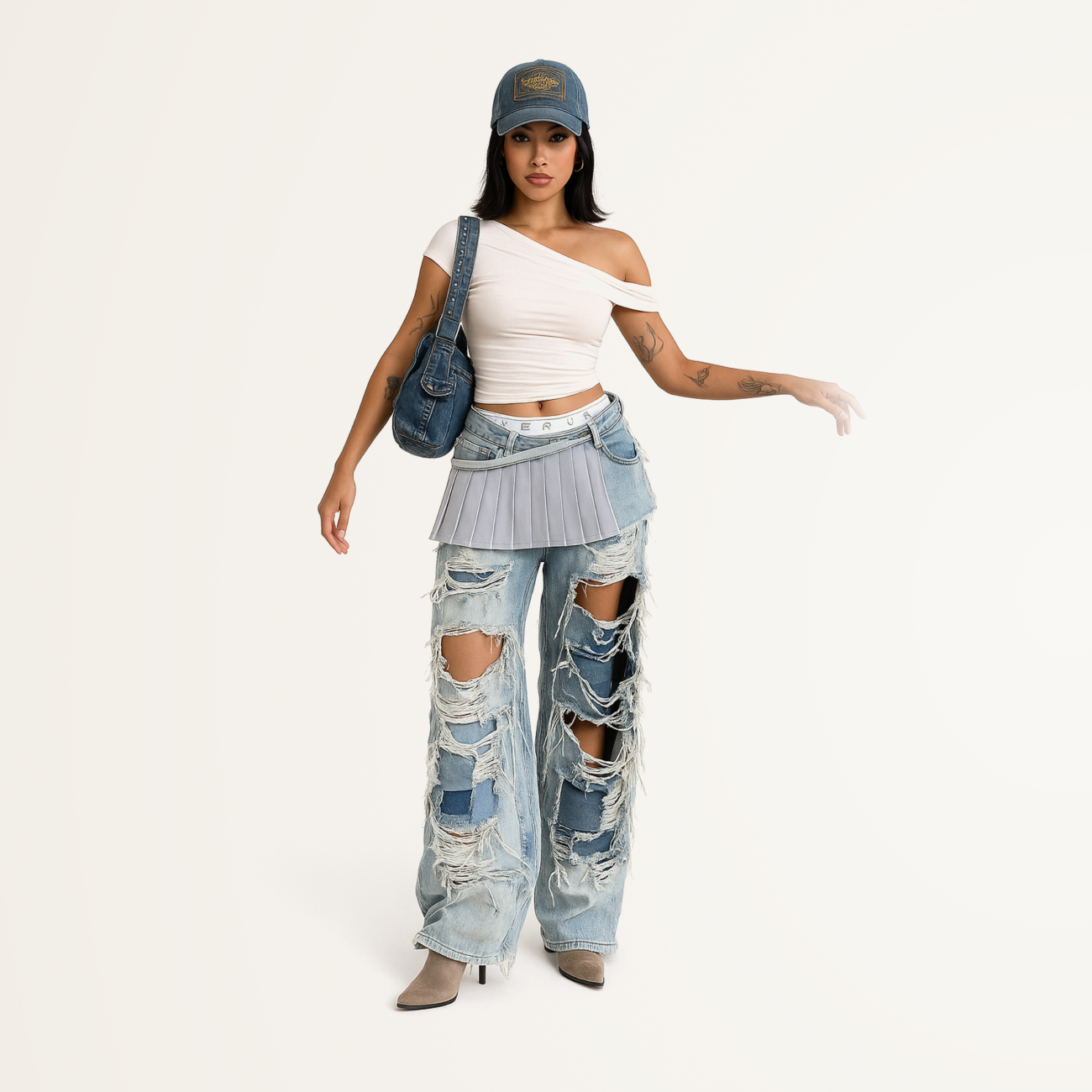Grunge
Grunge is an aesthetic born out of rebellion. It rejects traditional fashion norms, promoting freedom of self-expression and inner independence. Defined by a deliberate disregard for glamour and refinement, grunge is the perfect style for those who wish to break away from conventional standards and embrace authenticity and effortless attitude.
At its core, grunge stands in opposition to consumerism, embracing a DIY ethos and celebrating creativity, individuality, and the beauty of imperfection. It’s more than a look—it’s a statement of nonconformity and raw selfhood, where clothes become a medium for expressing one’s detachment from polished ideals and connection to real, unfiltered life.
History
Grunge emerged in the 1980s as a subcultural movement in Seattle, fueled by a rebellious youth spirit, the influence of punk rock, and a growing alternative cultural scene. By the early 1990s, grunge had gained global recognition, largely thanks to the rise of bands like Nirvana, Pearl Jam, and Soundgarden, who became the icons of the movement and defined its sound and look.
The style entered the fashion world through designers like Marc Jacobs and Vivienne Westwood, who brought its raw, rebellious, and disheveled aesthetic onto the runways, blending streetwear with high fashion. Though grunge eventually became part of the mainstream, it never lost its spirit of freedom, individuality, and strong anti-glamour stance—a lasting symbol of nonconformity and underground creativity.
Signature elements of the style
Color palette
Grunge gravitates toward dark and muted tones such as black, grey, burgundy, forest green, and navy blue, along with earthy shades like brown and khaki. A key feature is the \
Prints
Plaid and stripes are the hallmark prints of grunge. Tartan flannel shirts are iconic to the style, symbolizing its laid-back and rebellious roots. Occasionally, you'll find distressed graphics, band logos, or slogan tees that add a punk edge and reinforce the genre’s anti-establishment attitude.
Textures
Grunge favors natural, rugged fabrics—like leather, denim, wool, and cotton—often appearing faded, torn, or distressed. Contrasting textures are common: pairing delicate knits with rough denim or leather evokes the style’s raw, thrown-together sensibility and deliberate visual dissonance.
Cuts & silhouette
The cut is typically relaxed, oversized, or even slouchy, reflecting a sense of freedom and nonchalance. Layering is key—think T-shirts under flannels, over hoodies, beneath jackets—creating looks that are imperfect by design, rejecting sharp tailoring in favor of casual, unrefined silhouettes.
Wardrobe essentials
- Plaid flannel shirt: A grunge staple, often worn open over a T-shirt or tied around the waist for that signature effortless look.
- Ripped jeans: Preferably faded, distressed, or frayed—these jeans embody the raw and rebellious attitude at the heart of grunge.
- Leather jacket: Adds a punk edge to the outfit; worn-in, vintage styles are especially true to the grunge spirit.
- Old printed T-shirts: Band tees, graphic prints, or slogan shirts that look thrifted or weathered over time—these reflect individuality and anti-mainstream values.
- Chunky boots (like Dr. Martens): Heavy-duty lace-up boots that bring attitude and practicality; perfect for grounding any layered grunge look.
- Oversized sweaters: Slouchy knits with a relaxed fit, often appearing stretched or slightly worn, ideal for layering and conveying that signature nonchalant vibe.
Substyles
- Soft Grunge: A gentler, more refined take on traditional grunge. It features pastel tones, lightweight fabrics, and floral prints, blending classic grunge pieces with feminine details. Soft grunge maintains a rebellious edge while softening the overall aesthetic with a dreamy, romantic twist.
- Glam Grunge: A fusion of grunge and glamour, this substyle mixes luxurious fabrics like velvet, satin, and even sequins with iconic grunge staples like leather jackets, band tees, and plaid shirts. It’s edgy yet polished, rebellious with a touch of rockstar chic.
- Grunge Punk: This is where grunge collides with punk culture, creating a raw, aggressive look. Think chains, studs, spikes, and bold, anarchic prints. Grunge punk retains the slouchy, undone feel of grunge but amps up the attitude and intensity, making it perfect for those who want to push boundaries and provoke.
Email: support@belt-app.com


















